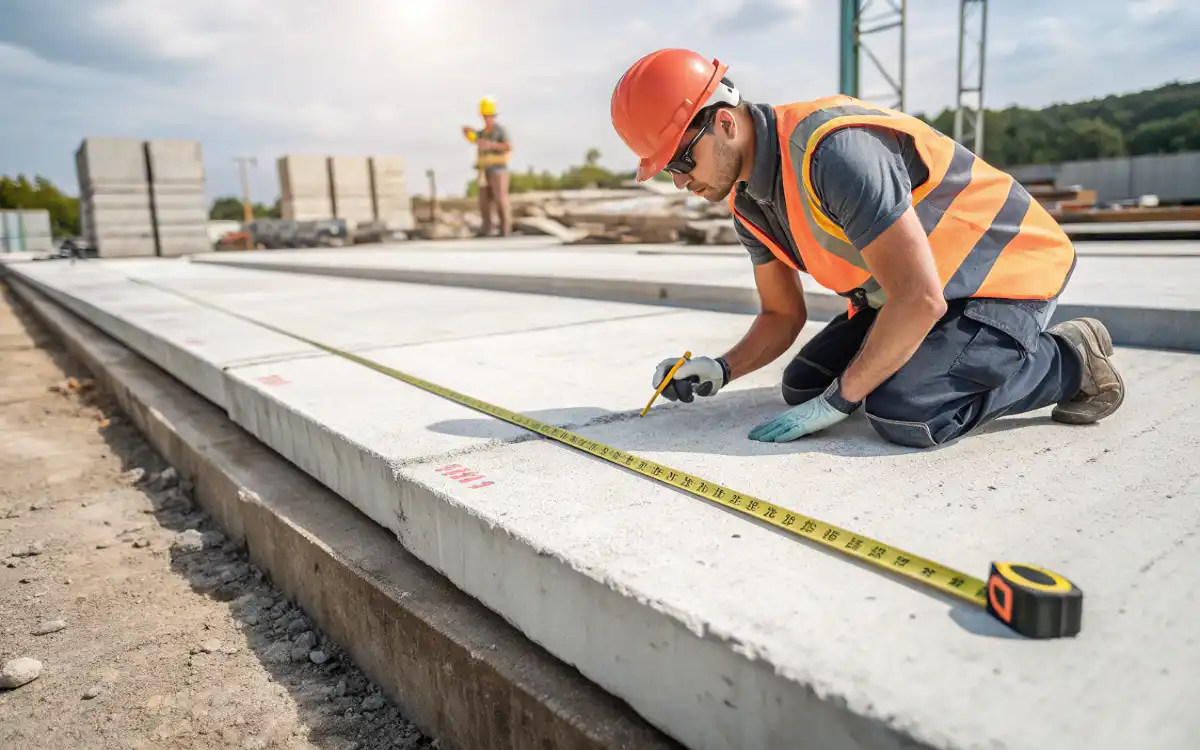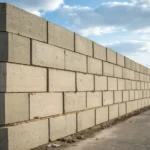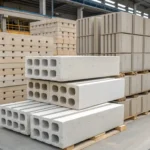Introduction
All professionals involved with precast concrete projects need to know how to measure linear footage accurately, whether for new installations or modifications to existing projects.
Correct linear measurements facilitate project workflow, control costs, determine concrete wall and linear structures, precast cement structures rates, and fulfill project specifications, and avoid materials shortages. Guides of these types help beginners and professionals alike.
This guide focuses on the principles and practical steps of linear footage measurement, based on 2025 construction practices, to fully guide beginners and seasoned professionals.
What is Linear Footage?
Linear footage refers to measurements of length over a straight line in feet. 12 inches equals 1 linear foot. In linear measurements, height and depth are ignored and only length is considered.
In construction, suppliers offer for sale various materials such as boards, ropes, steel bars, and concrete panels by linear foot and so construction workers must learn to measure linear footage for it to be meaningful.
Why Measuring Linear Footage Matters in Precast Concrete
Measure Linear Footage is an essential measure in precast concrete because these structures virtually always need to be constructed to fit particular dimensions on the site.
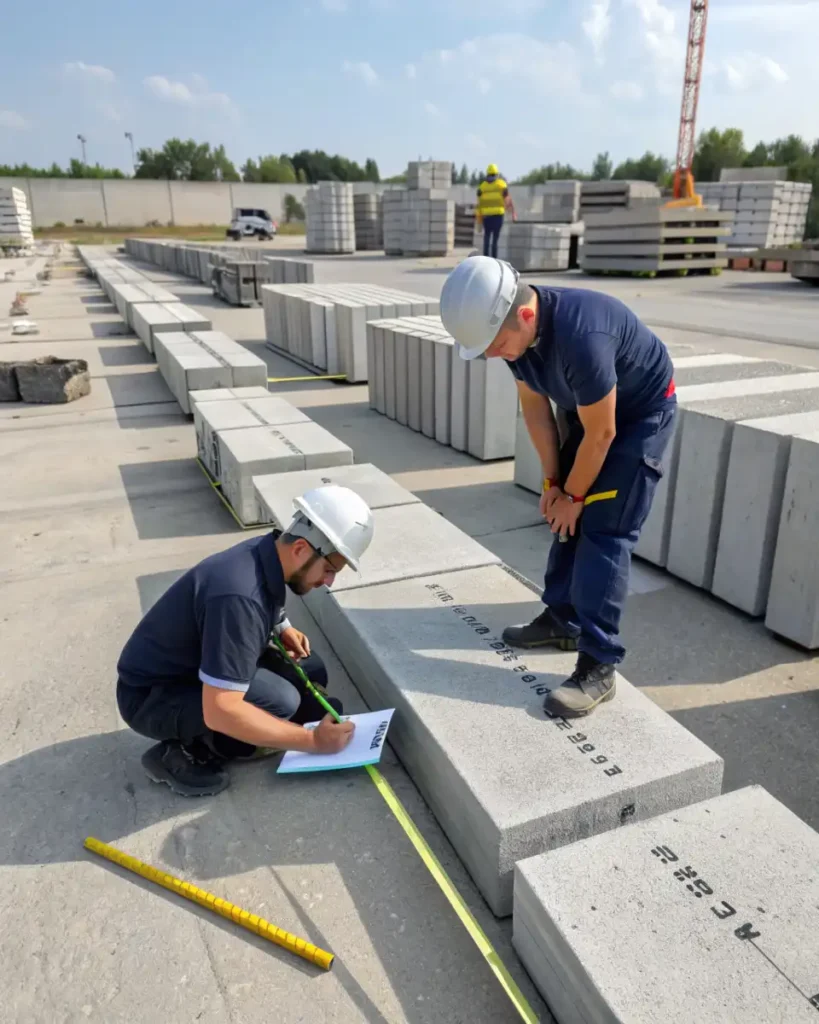
Consequently, appropriate linear measurements determine the requisite precast concrete needed, help in proper placement, and reduce wastage in materials especially in concrete walls and fences.
Additionally, linear footage is the primary measure used to calculate square footage, which is needed for estimating an area in budget. However, for most procurement of materials and layout, estimating linear footage is the most critical first step.
Understanding the Difference: Linear vs. Square vs. Cubic Footage
- Linear footage: measures length only over a straight line.
- Square footage: measures an area (length x width), such as flooring or concrete slabs.
Cubic footage entails the measurement of volume, which derives from the formula length multiplied by width multiplied by height. This is useful in estimating concrete pours as well as estimating volumes.
Measure Linear Footage is the most basic and straightforward measurement. It serves as the basis of most estimates in precast concrete projects.
7 Easy Steps to Measure Linear Footage in Precast Concrete Projects
1. Gather Required Tools
The primary tool for obtaining precise linear measurements is a measuring tape. It is best to use a heavy duty retractable tape. For large commercial installations, additional precision can be obtained from laser measuring devices or digital measuring wheels.
2. Identify What Needs Measuring
Measure Linear Footage each straight section of the precast concrete structure. For example, fences, walls or footing segments. Linear footage measurement is confined to straight lines, so partition the project accordingly.
3. Start Measuring Each Segment
Tape measuring should begin from the indicated starting point which is the end of the first straight segment. For exact readings, the tape should be stretched out in a straight and flat line.
For work involving bends or angles, measurement should be taken at each bend, the reading recorded and measurement continued at the next straight segment.
4. Record Measurements Separately
It is crucial to accurately document the length of each section.
Organizing your sections in a sketch or table can be useful for summation later. This ensures clarity regarding the project specifics for concrete walls, fencing, or precast cement panels.
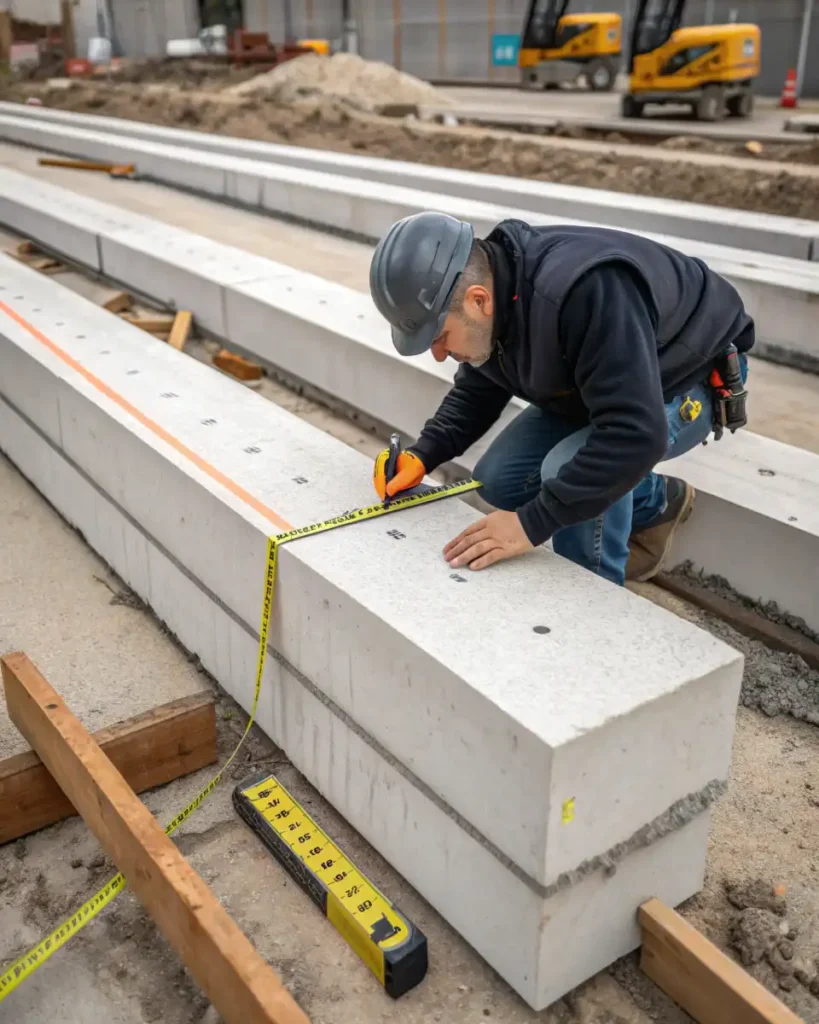
5. Accumulating Linear Footage
After measuring, the next order of business is to total up all segment lengths to obtain the total linear footage. This is an important step in the preparation of the overall project documentation. Please ensure accuracy during this step to avoid any waste of installation time or materials.
6. Measurement Conversion
If a project requires it, you may need to convert inches or meters into feet. For instance, to convert inches to feet, divide total inches by 12:
Feet = total inches ÷ 12
For metric conversion to feet:
Feet = Meters × 3.281
7. Validation and Reporting
It is prudent to check Measure Linear Footage totals against a site plan for reasonableness and then share your findings with your project manager, contractor, or supplier. This step is crucial to ensure successful installation and to obtain the correct quantities of the materials for order.
Preventing Common Errors
Always delineate and document any curves or bends in your sections to avoid increased project discrepancies.
This ensures you retain a higher level of accuracy. The tape used for measurement must always be flat and the measurement must always be confirmed to have started from the zero point.
- Conflating linear and square footage: Take note that only the length is required when calculating linear footage. The height and width are to be ignored.
- Neglecting to convert measurement units: Ensure all units are the same before addition.
Precast Concrete Projects Measurement Checklist
| Measurement Step | Tool Required | Common Mistakes | Best Practice Tips |
| Identify Segments | Project sketch | Skipping bends | Sketch site layout first |
| Measure Straight Lengths | Measuring tape | Tape not straight | Use laser for long spans |
| Record Each Measurement | Notebook/table | Mismatched units | Use clear labeling |
| Convert to Linear Footage | Calculator | Incorrect conversion | Double-check calculations |
| Summing Sections | Calculator/Excel | Missed entries | Use tabular format |
| Validate Against Plans | Project site plan | Overlooking site changes | Cross-check with contractor |
| Communicate Results | Email/report | Incomplete reporting | Send summary to all teams |
Updates for 2025: Latest Guidelines for Measuring Linear Footage
New construction standards highlight the importance of digital measuring and recording tools. The use of digital measuring tools minimizes manual errors and captures measurements with more accuracy.
Most mobile integrated software used by precast contractors captures measurements onsite and streamlines the ordering process, thus preventing costly ordering errors.
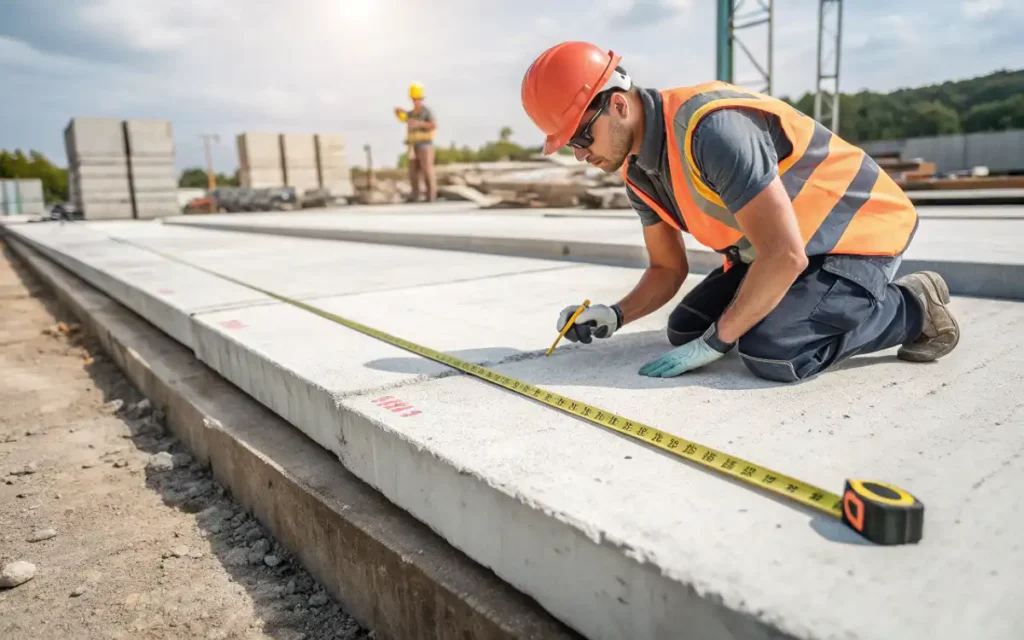
Despite the advances in technology, the fundamental principle of measuring linear footage in straight lines and focusing on length, has not changed for 2025.
Building codes also provide for third party, validation, and documentation, which includes the measurement of large commercial or industrial precast projects with photographs or videos.
Contractors should reference the most recently published regional building codes to avoid non-compliance and determine the minimum requirements for the concrete walls and footings.
Application Examples Concrete Walls, Fences, and Precast Panels
Concrete Walls
Before calculating the area or volume, measure the linear footage along the base of the wall. If the wall is irregularly shaped, divide into straight sections, measure individually then add.
Precast Fences and Panels
Measure Linear Footage each straight run individually. Bends, corners, or curves should be assessed and accounted for in the total linear footage.
Precast Contractors Role
A qualified precast contractor will assist in confirming all linear measurements, using validated tools, and for project validation prior to ordering or installing.
This guarantees that all precast cement structures, walls, and fences are manufactured and assembled according to the design specifications, thus minimizing possible risks and maximizing the potential for success of the entire project.
Conclusion
- To determine the linear footage for precast concrete projects accurately:
- Use appropriate and accurate measuring tools and techniques.
- Take and document all measurements, convert them to the required units, and concentrate on the length of the lines to be measured.
- Confirm all measurements with the contractor to facilitate the successful execution of the project.
- For optimal linear footage measurement, utilize the latest tools and adhere to the 2025 technological advances and regulatory frameworks available.
For optimal success in any precast concrete project, there should also be primary accuracy and precision in the linear measurements that are foundational to the project.
With the seven steps outlined above, any precast contractor or project manager can measure linear footage with the confidence that the project will be completed on schedule and within the budget.
For Repair and Services
1924 W Edward Ln, Milwaukee, WI 53209, United States
Phone: +14142855933
Email: [email protected]
